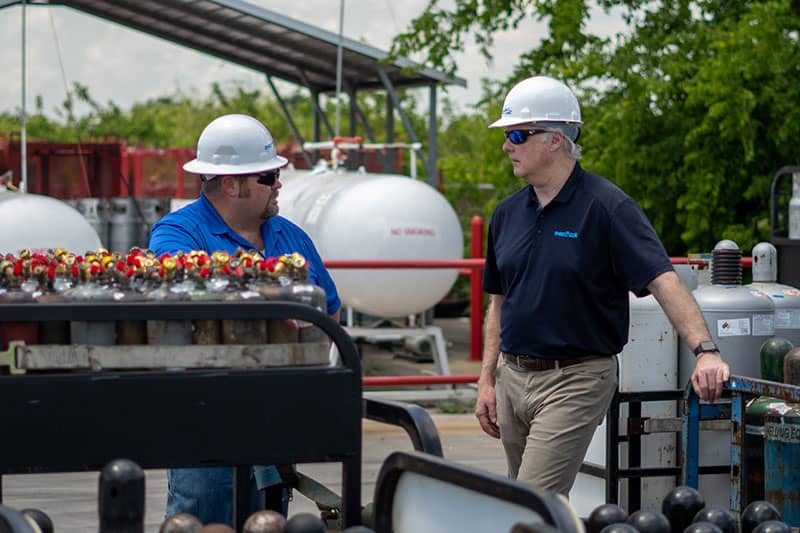The Role of Gas in Welding: How nexAir’s Solutions Improve Performance and Safety
Shielding gas plays a crucial role in welding, affecting everything from arc stability to weld quality and operator safety. Whether you’re working with MIG, TIG, or Flux-Core, choosing the right gas mixture can improve penetration, reduce defects, and create stronger, cleaner welds. With nexAir’s extensive selection of welding gases and expert guidance, welders can optimize their process for better results while maintaining a safe work environment.
Why Gas Matters in Welding
In most welding processes, shielding gas protects the molten weld pool from contamination by atmospheric gases like oxygen, nitrogen, and water vapor. Without proper shielding, welds can suffer from porosity, oxidation, and weak bonds, leading to costly rework or failures in structural integrity. The right gas selection prevents these issues and, enhances weld quality, reduces spatter, and improves overall efficiency.
Beyond shielding, gases are also used for cutting and purging applications. Plasma cutting systems, for example, rely on compressed air or gas mixtures to create precise, clean cuts, while purging gases help maintain weld integrity in stainless steel and other reactive metals. Understanding the role of gas in your specific welding application is key to achieving the best results.
Choosing the Right Gas for Your Process
Different welding processes require different gases, and selecting the right one can significantly impact performance. nexAir provides a range of high-purity gases and custom-blended mixtures designed to meet the needs of professional welders. Here’s a look at common welding processes and their ideal gas pairings:
- MIG Welding (GMAW): Uses argon, carbon dioxide, or a mix of both. Pure CO₂ provides deep penetration but creates more spatter, while an argon-CO₂ blend improves arc stability and weld appearance.
- TIG Welding (GTAW): Requires pure argon or argon-helium mixtures for clean, precise welds, especially when working with aluminum and stainless steel.
- Flux-Cored Welding (FCAW): Some self-shielding wires don’t require external gas, but gas-shielded flux-cored welding often uses a CO₂ or CO₂-argon mix to enhance performance and minimize spatter.
- Plasma Cutting: Compressed air works for general applications, but for cleaner, high-precision cuts, nitrogen or oxygen may be used, depending on the material.
By selecting the appropriate gas blend, welders can improve weld penetration, minimize defects, and create stronger bonds while maintaining cost efficiency.
How nexAir Enhances Safety and Performance
Working with compressed gases requires proper handling, storage, and usage to ensure safety in the workplace. nexAir supplies high-quality welding gases and provides the expertise needed to use them safely and effectively. Our solutions include:
- Reliable Gas Supply: nexAir offers bulk, cylinder, microbulk gas solutions to ensure you never run out of essential welding gases.
- Precision Blends: Our custom gas mixtures are designed to optimize welding results while reducing waste and costs.
- Safety Expertise: We provide guidance on proper cylinder handling, storage, and usage to prevent leaks, contamination, or hazardous exposure.
With nexAir, you’re not just buying gas—you’re gaining access to a team dedicated to helping you improve efficiency, maintain compliance, and create safer working conditions.
Forge Forward with the Right Welding Gas
The right shielding and cutting gases significantly affect welding performance and overall efficiency. nexAir provides high-quality gas solutions backed by expert KnowHow™ to help welders achieve cleaner, stronger welds with greater consistency. Whether you’re optimizing your process or looking for a reliable gas supplier, we make it easy to get what you need.
Explore nexAir’s welding gas solutions today and see how the right gas can take your welding to the next level.
Don't see what you're looking for?
Everything we offer is a click away and it will arrive before you know it.




